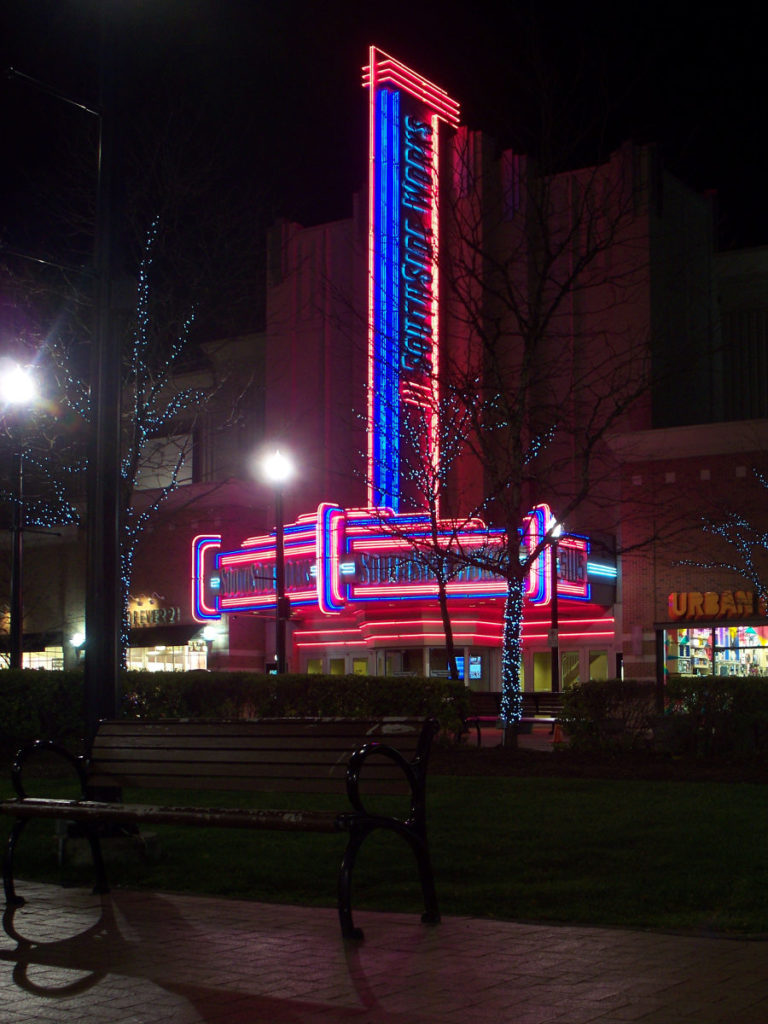
The South Side Works, an ambitious project to build an entirely new urban neighborhood, naturally needed a neighborhood cinema on the square. And the proper style for a neighborhood cinema is Art Deco, with lots of neon and other noble gases.
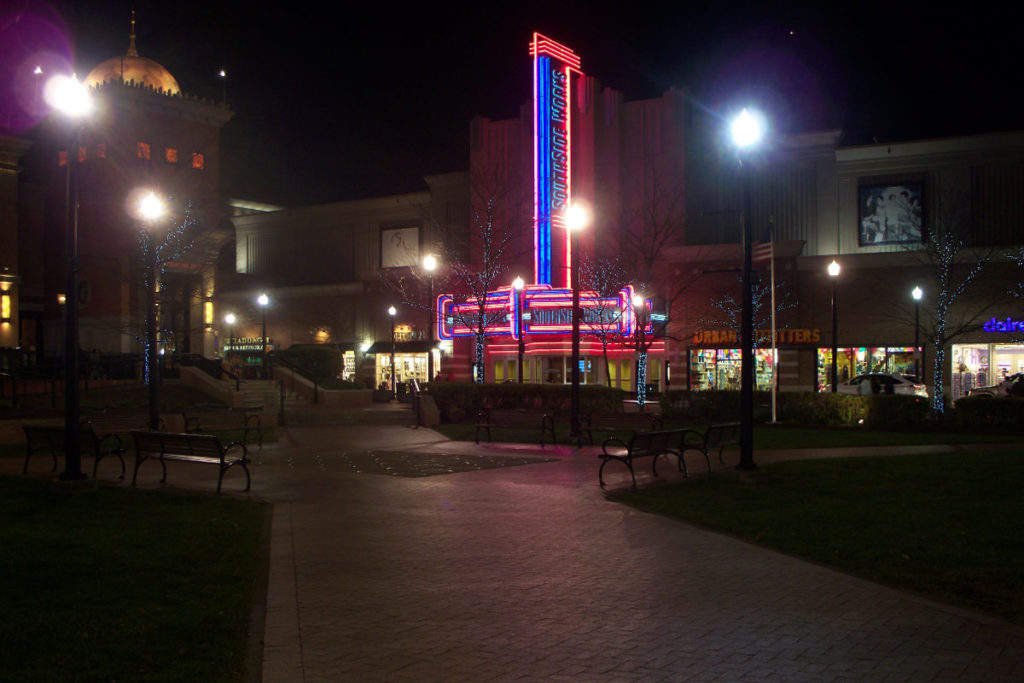

The South Side Works, an ambitious project to build an entirely new urban neighborhood, naturally needed a neighborhood cinema on the square. And the proper style for a neighborhood cinema is Art Deco, with lots of neon and other noble gases.


Two grand Art Deco skyscrapers face each other across Seventh Avenue: the Gulf Tower (1932) and the Koppers Tower (1929).
The Gulf Tower (in front in these pictures) is a good example of the style Father Pitt calls “Mausoleum-on-a-Stick”: the top is modeled after the Mausoleum at Halicarnassus. This was Pittsburgh’s tallest building for decades, until it was surpassed by the U. S. Steel Tower; after the building boom of the 1980s, it now stands at number 6. The architects, Trowbridge & Livingston, were the originators of the Mausoleum-on-a-Stick style: twenty years earlier, they had created it with the Bankers Trust Company Building in New York, which looks very much like a primitive, pre-Deco version of the Gulf Tower.
The Koppers Tower was designed by the prolific firm of Graham, Anderson, Probst & White, whose buildings litter the skyline in Chicago, and who also designed the Terminal Tower in Cleveland. This is the most splendid Art Deco building in Pittsburgh, and it was very briefly the city’s tallest building, until the Grant Building surpassed it a few months later.
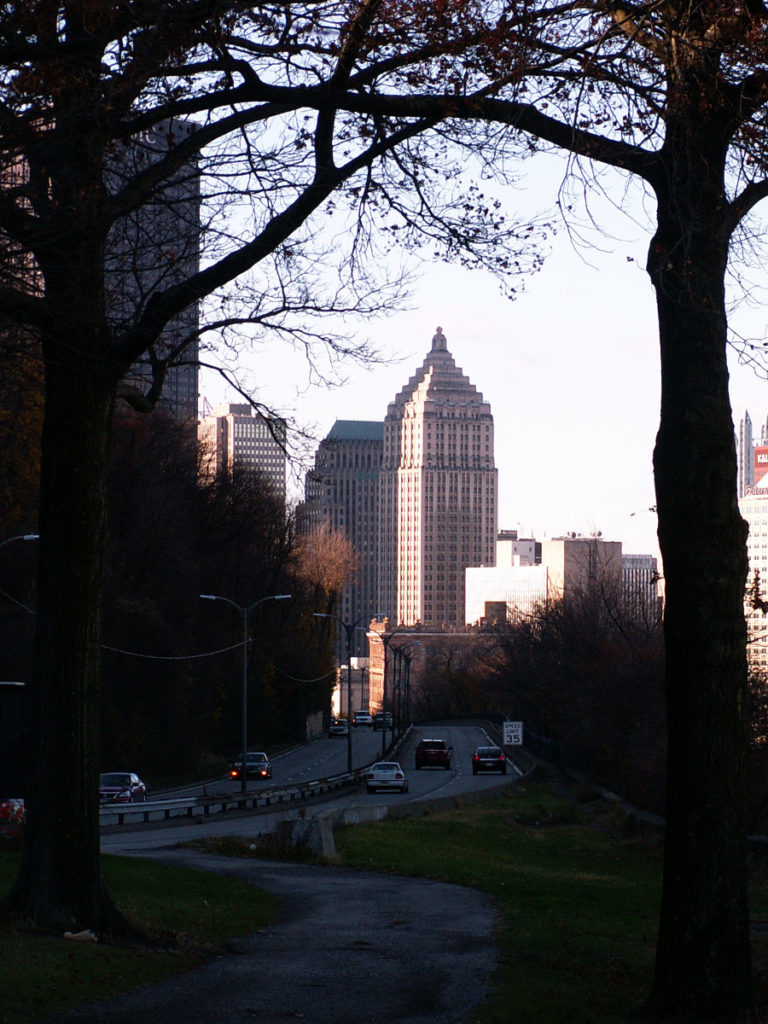
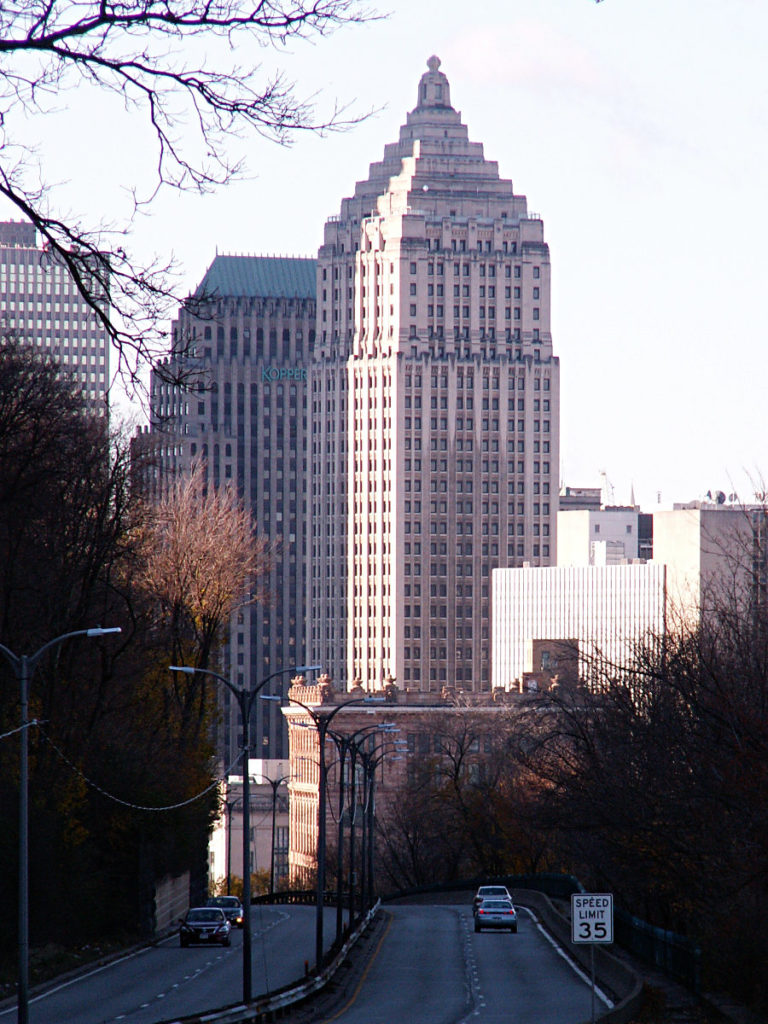
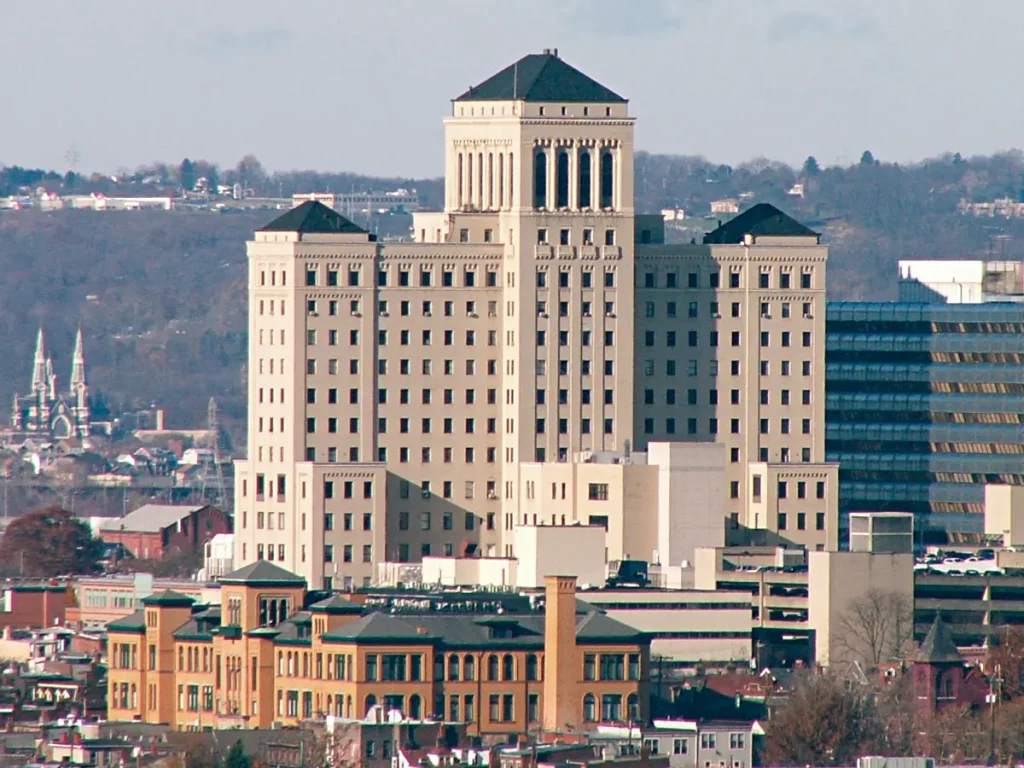
The only really elegant skyscraper on the North Side is this hospital, designed by York & Sawyer in 1926. The style is what old Pa Pitt likes to call “Mausoleum-on-a-Stick”: the central tower is topped by an Art Deco interpretation of the Mausoleum at Halicarnassus. This is one of three Mausoleum-on-a-Stick towers in Pittsburgh, and two of them are hospitals (the other being Presbyterian Hospital in Oakland). The third is the Gulf Building,which was designed by the originators of the style.
Below, we see the hospital with the narrow streets of Dutchtown in front of it.
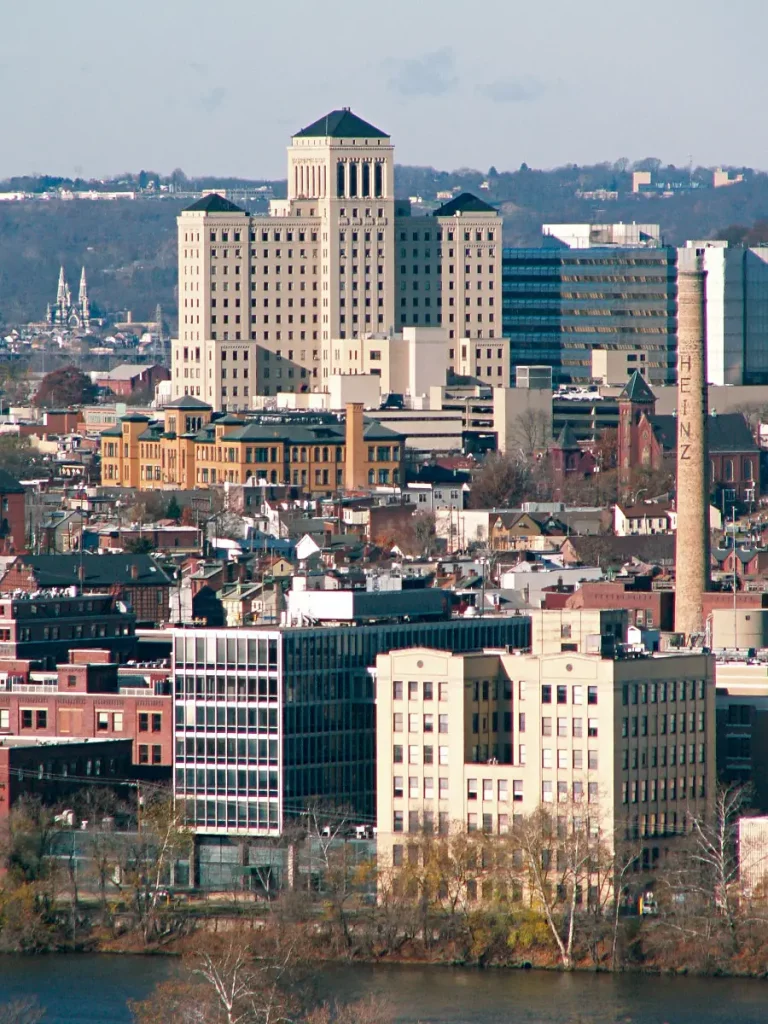

York & Sawyer built two skyscrapers in 1926 with notably similar designs. The other is the Royal Bank Tower in Montreal, which was the tallest building in the British Empire at the time (though it did not compare with the tall buildings of New York, Chicago, and Pittsburgh). The picture at left, by “Thomas1313,” was made available on Wikimedia Commons under a Creative Commons Attribution-Share Alike license.
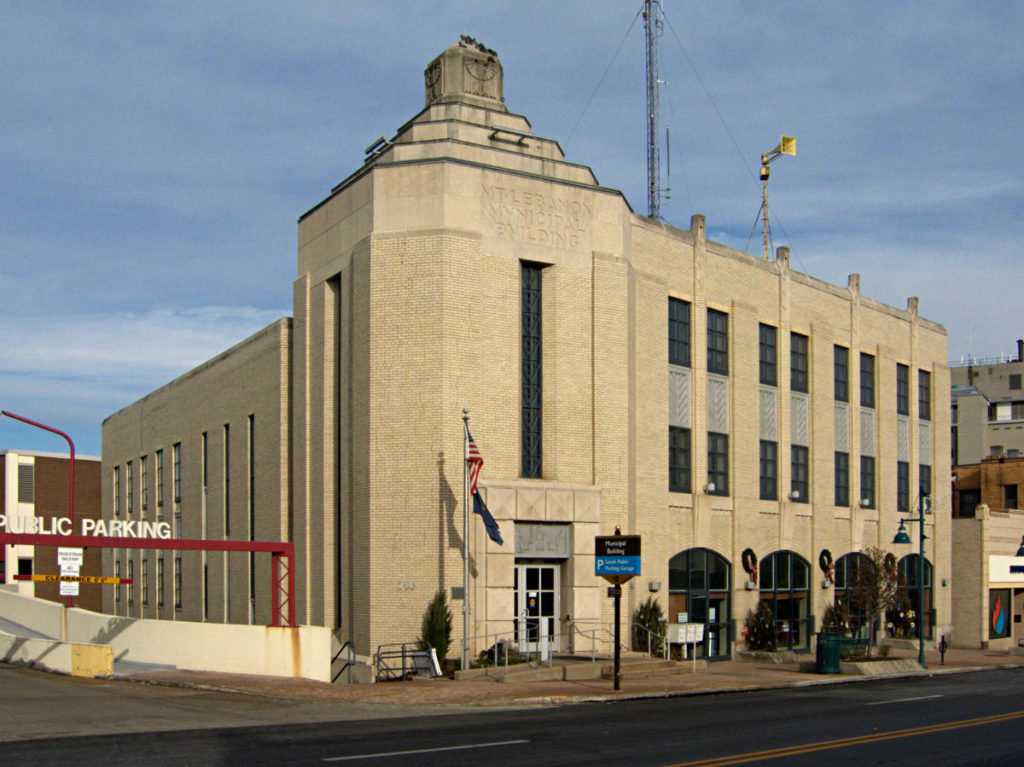
“Uptown” Mount Lebanon is a fine example of a 1920s streetcar suburb. (In southwestern Pennsylvania, the central business district of a town is often called “Uptown” if it’s on a hill.) There is more Art Deco here than anywhere else in the Pittsburgh area, except perhaps East Liberty.
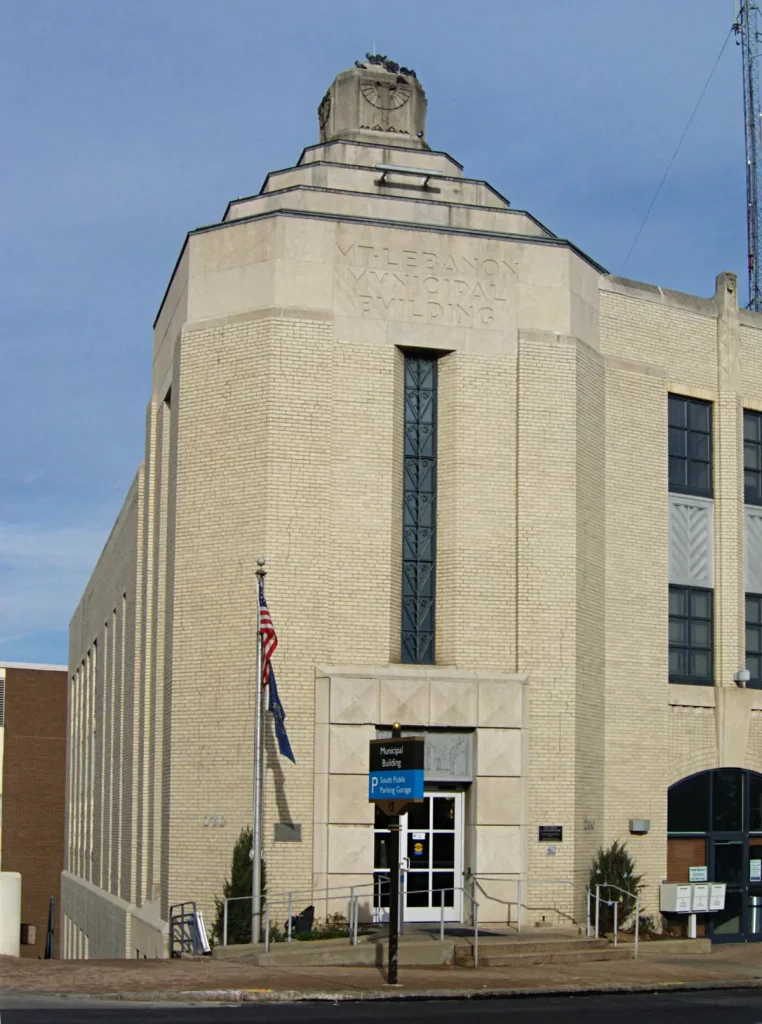

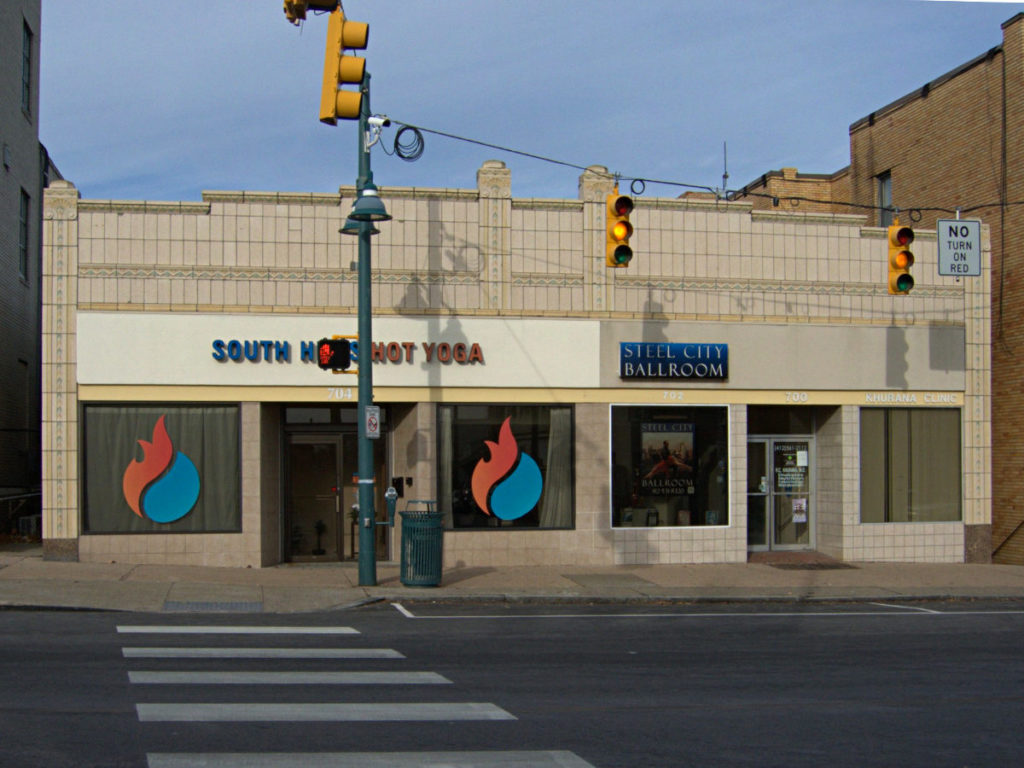

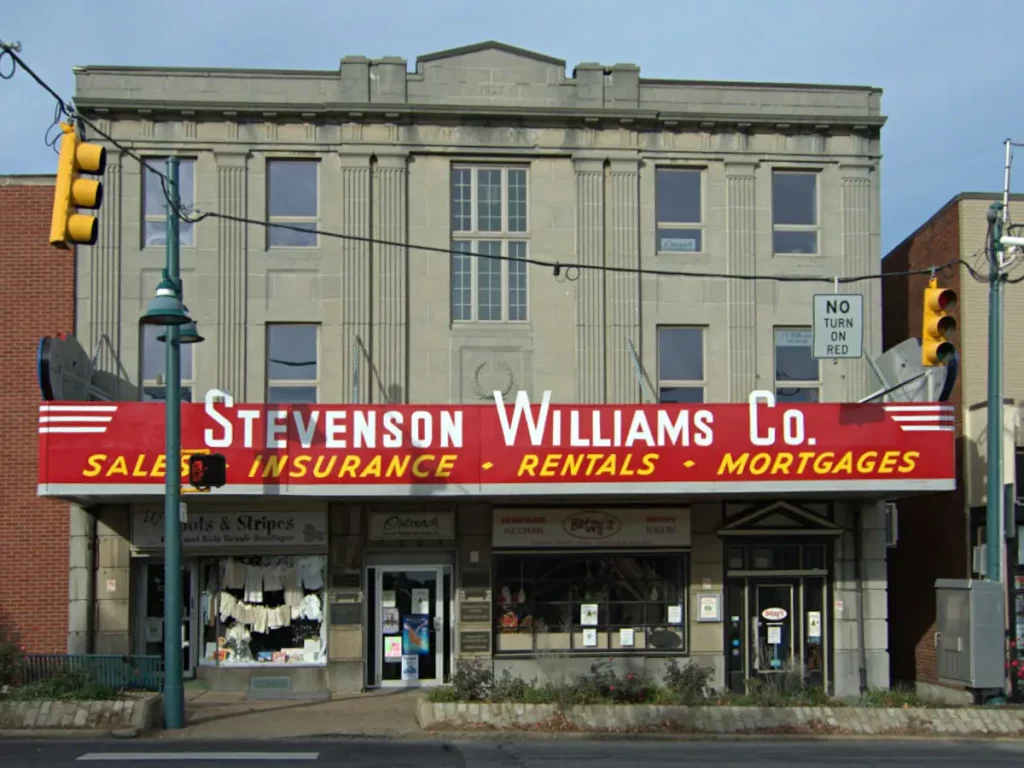
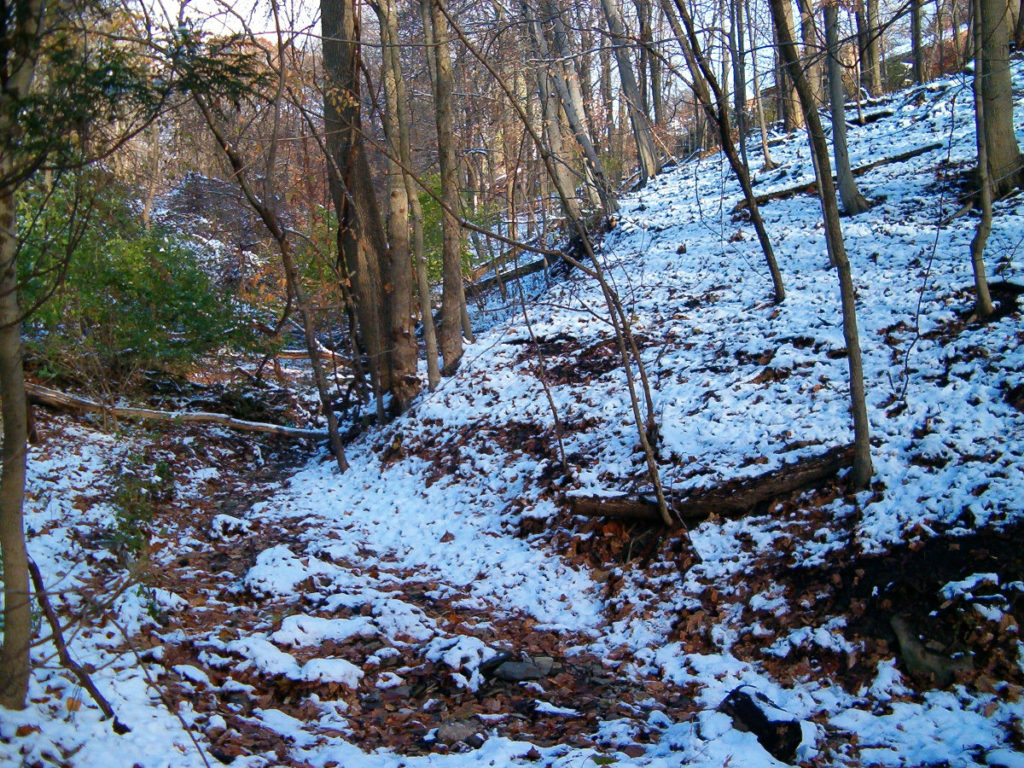
Our first substantial snow of the season left wet snow in the woods, but not on the roads—just the way snow is best appreciated.
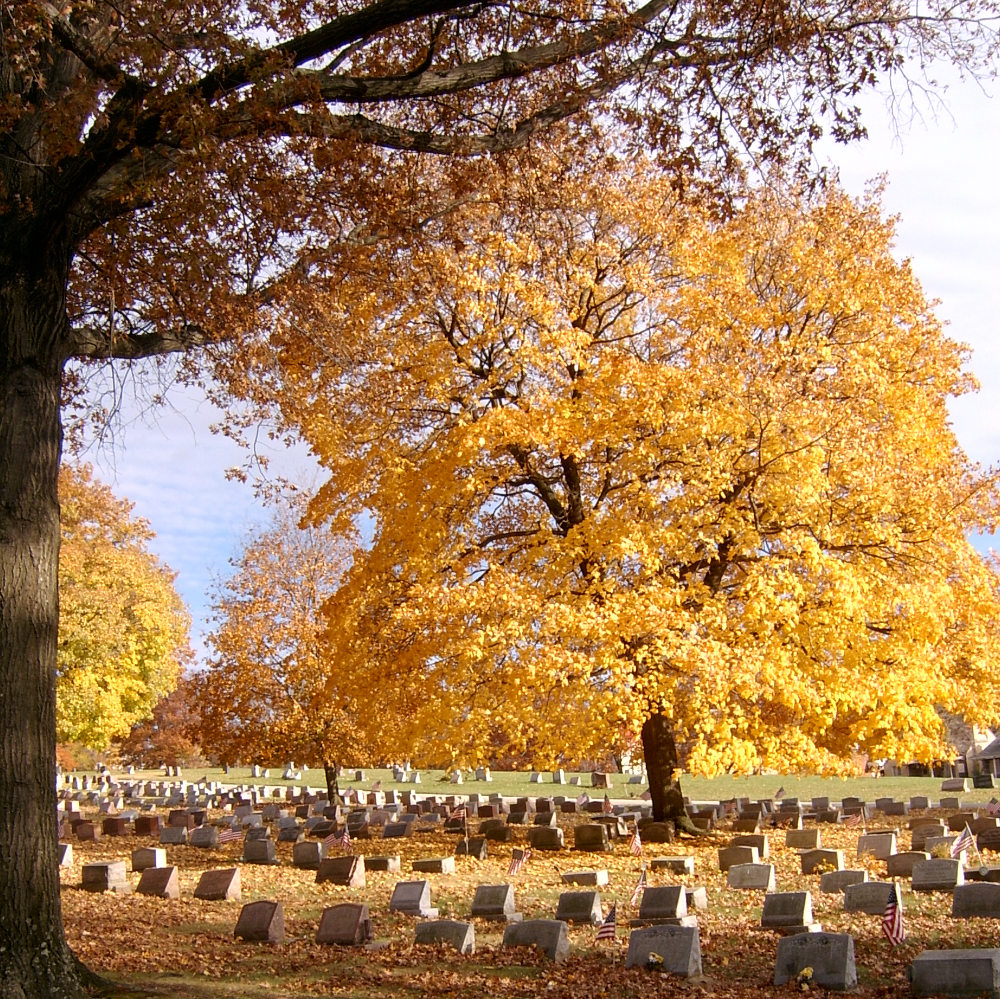
Cemeteries in Pittsburgh have the advantage of Pittsburgh topography to make them picturesque. Add fall colors, and the picturesqueness is irresistible. The Union Dale Cemetery is the premier address for deceased residents of the old City of Allegheny.
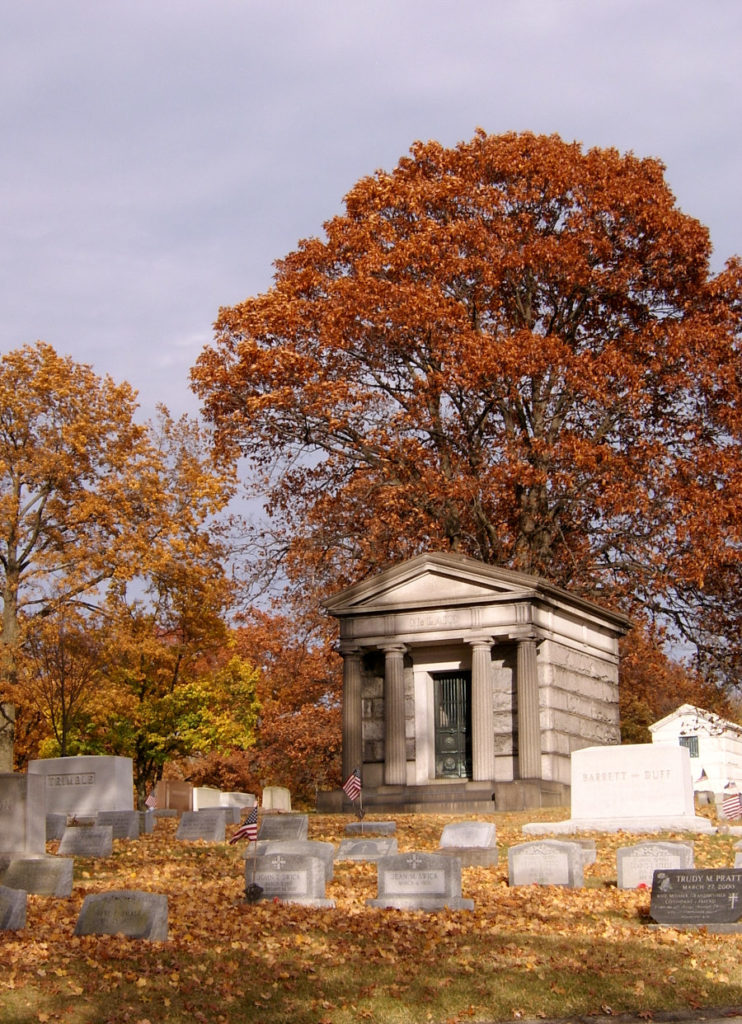
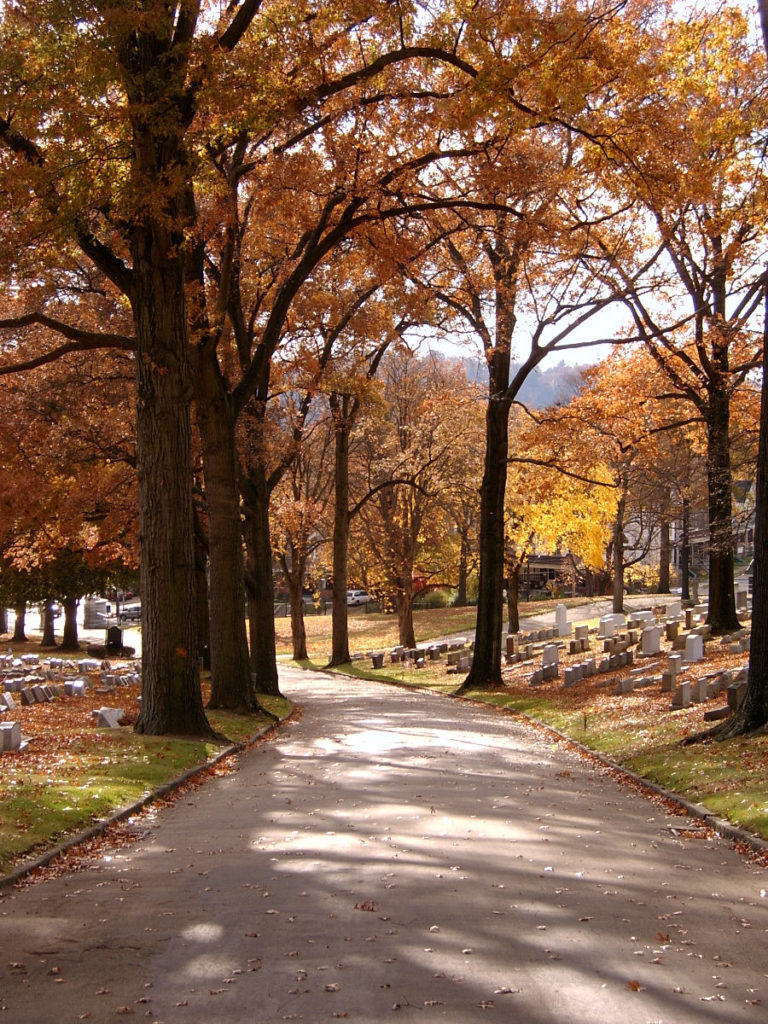
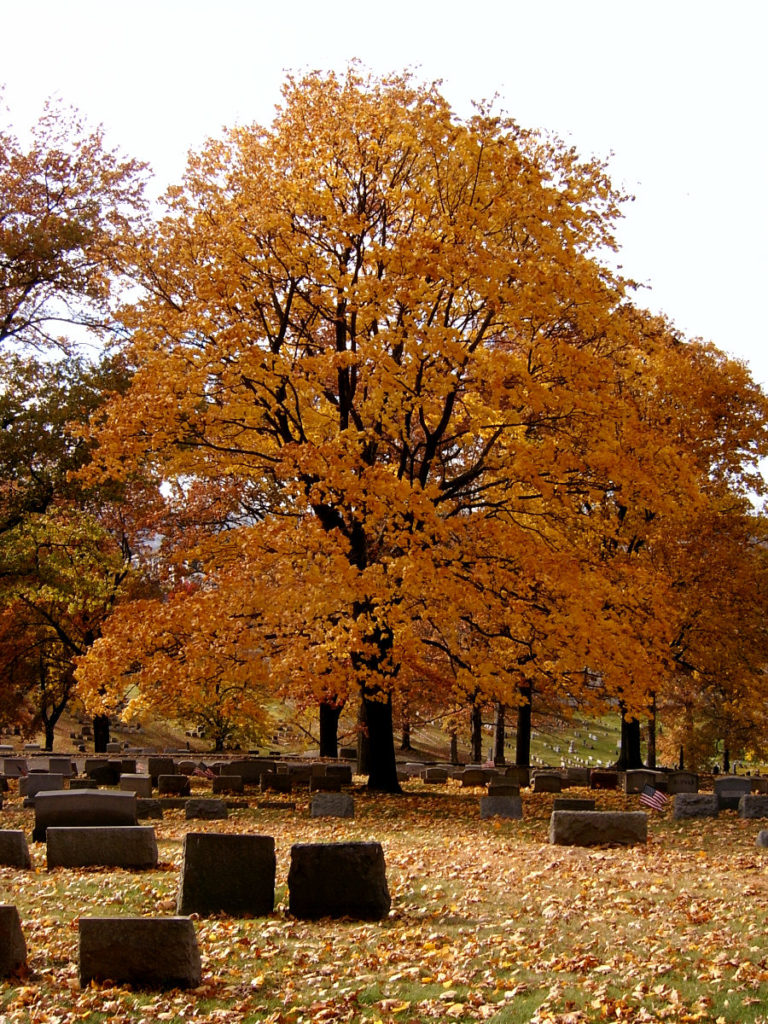
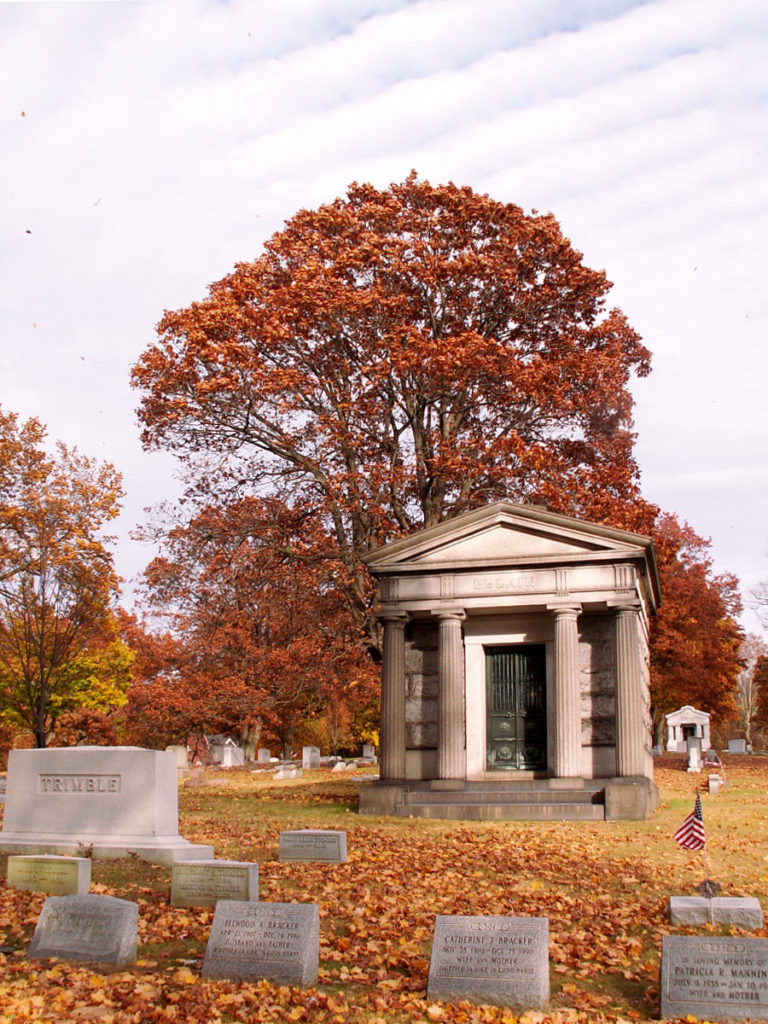

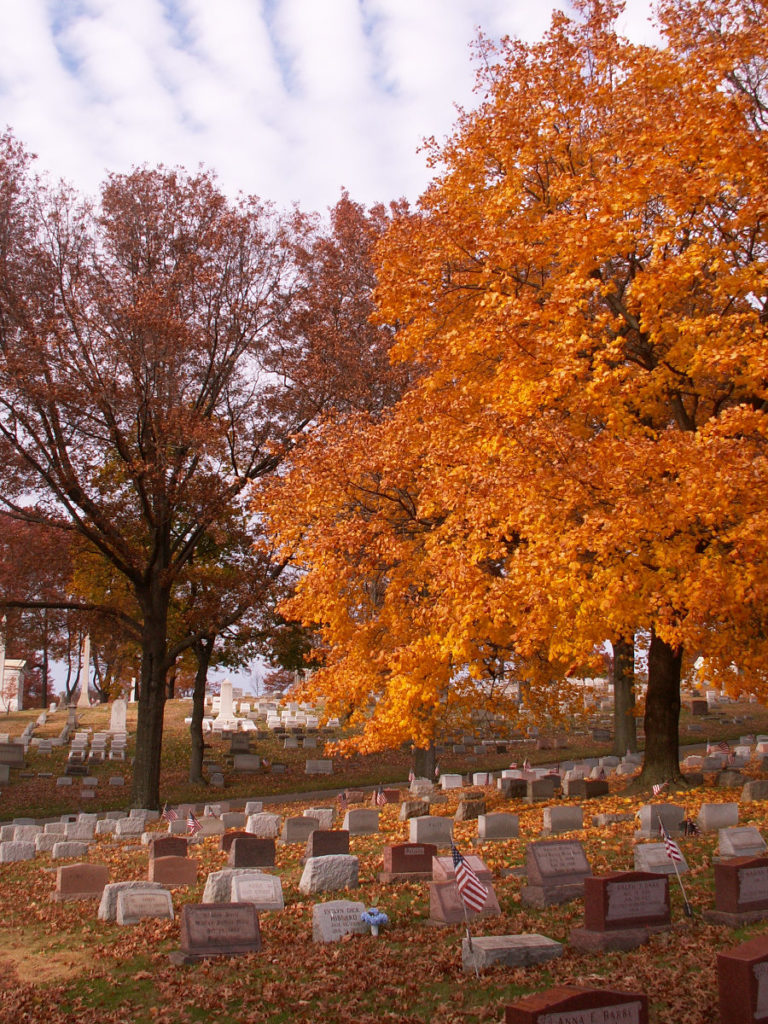

Little glimpses of the downtown skyline pop up unexpectedly in hilltop neighborhoods. Here, from a back street in Beechview, we see Mount Washington, with the U. S. Steel Tower and the BNY Mellon Center poking their heads up behind the hill.

A subdued October has given way to the most gloriously colorful November in recent memory.



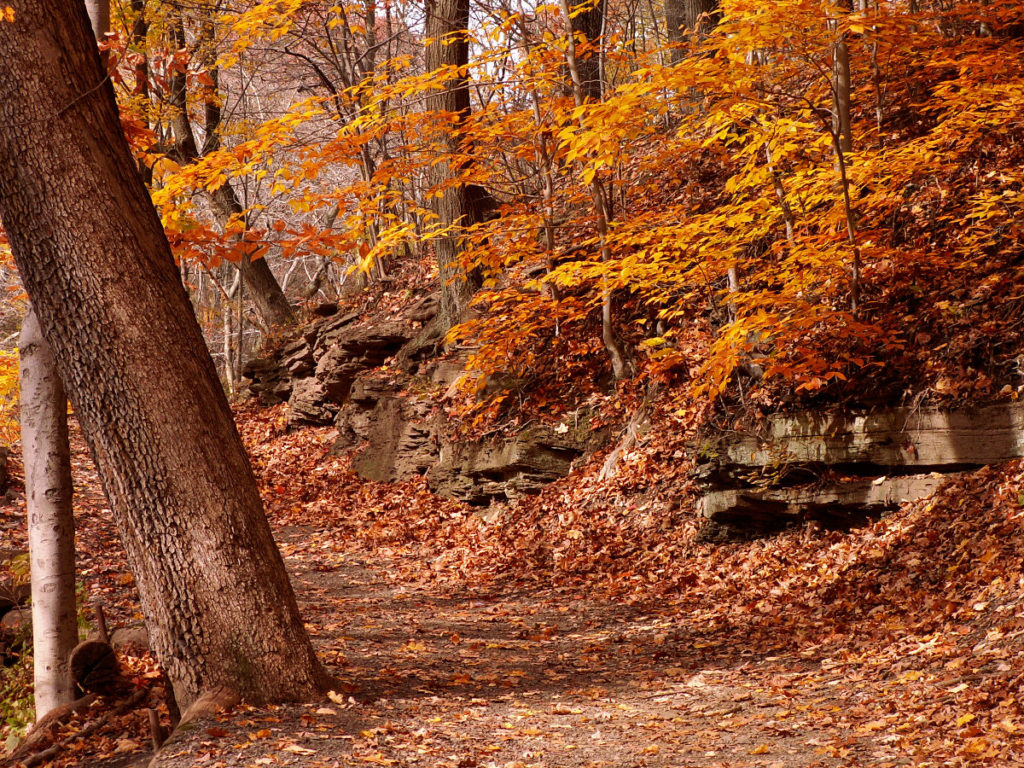
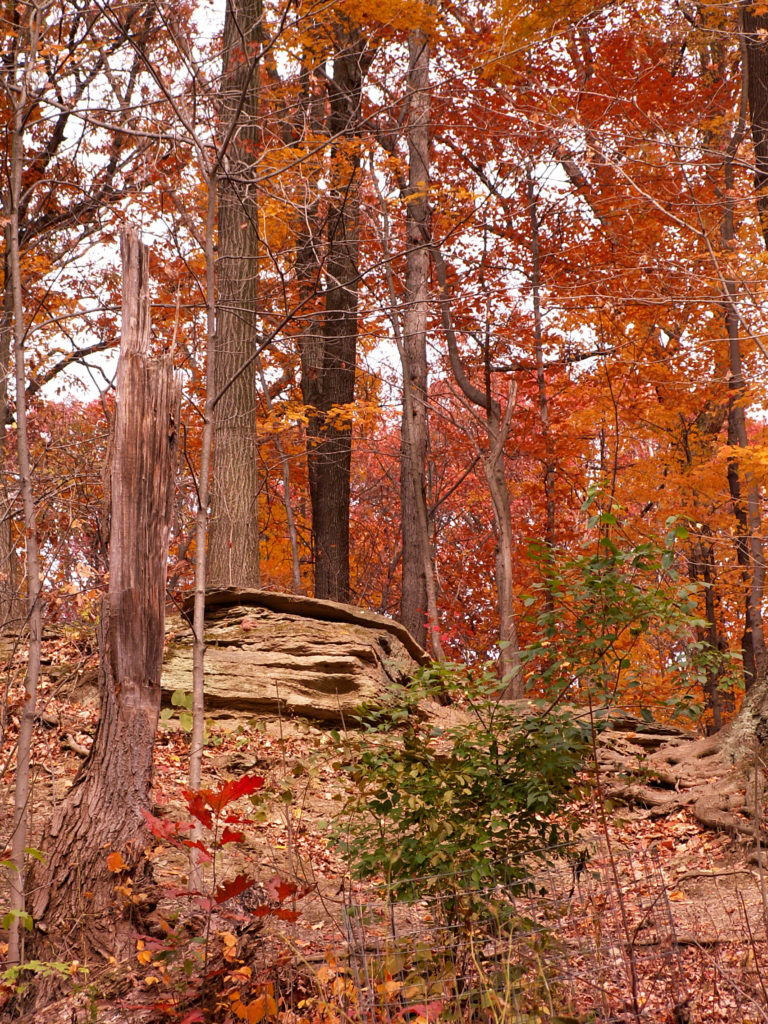





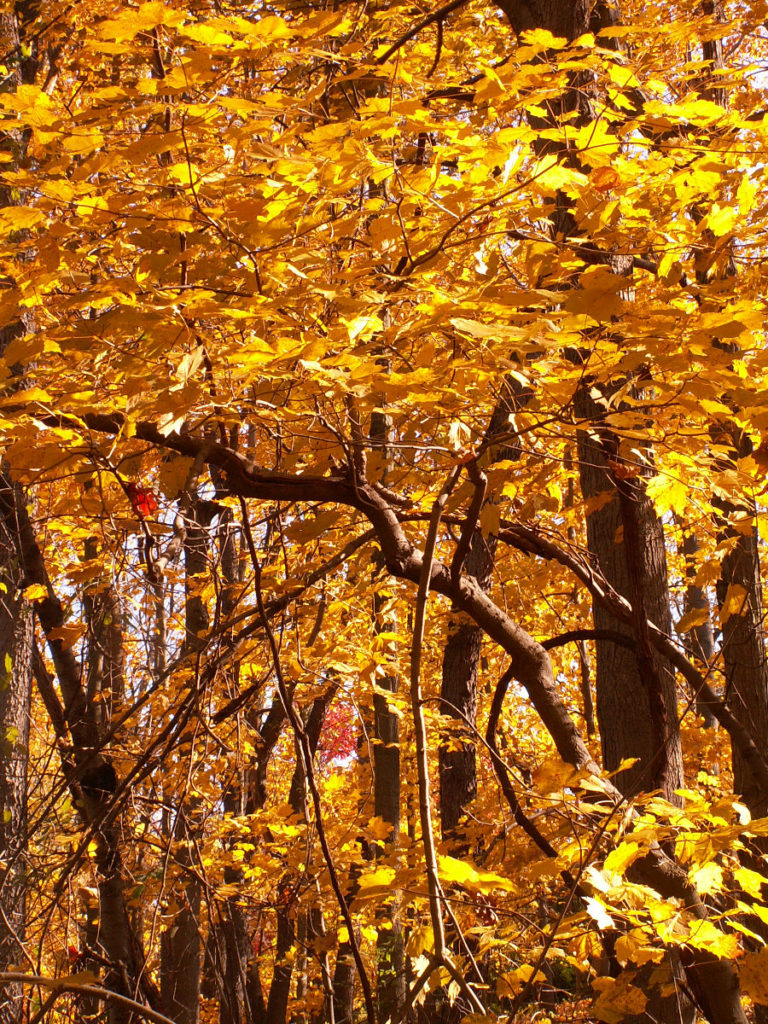
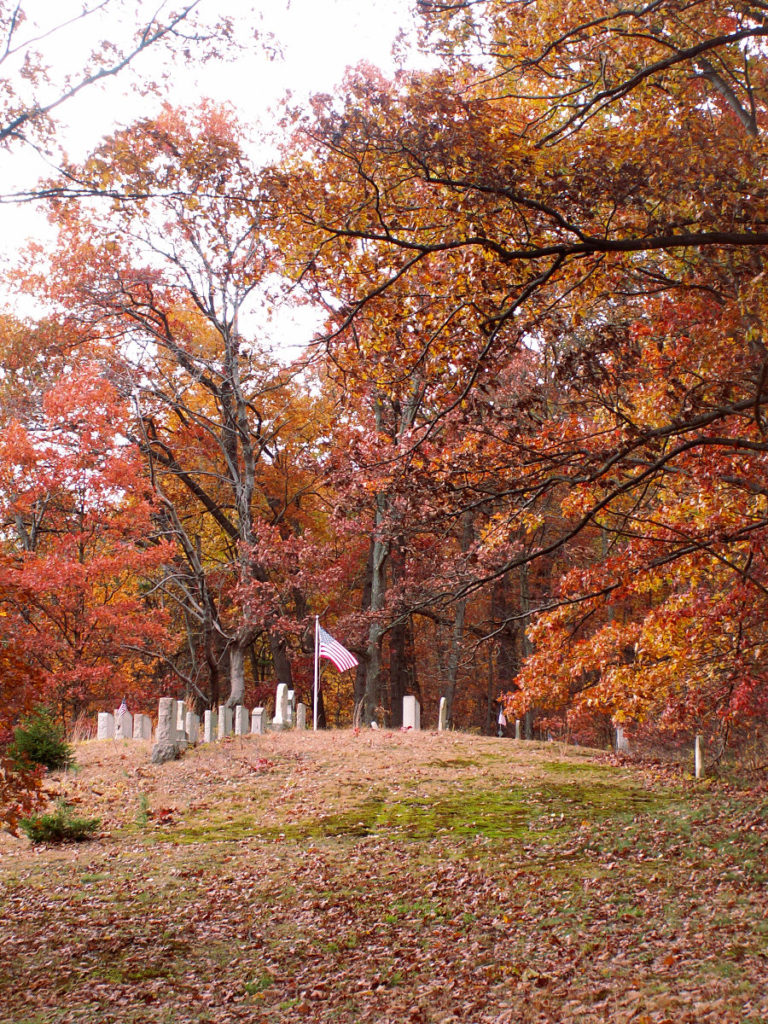

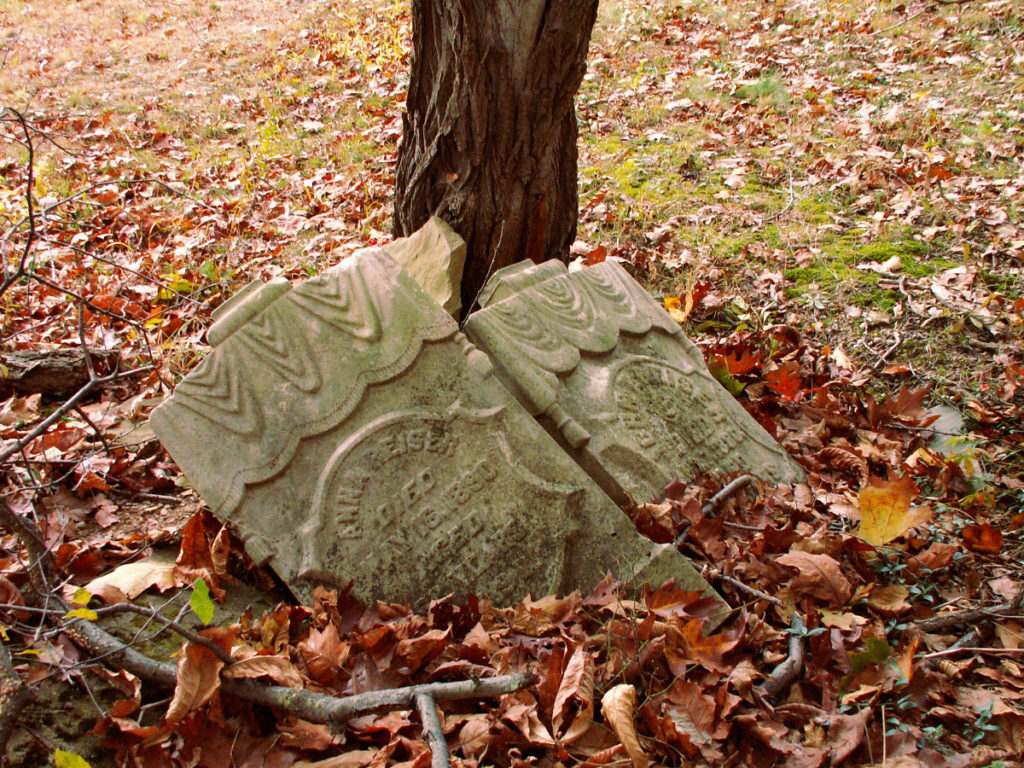
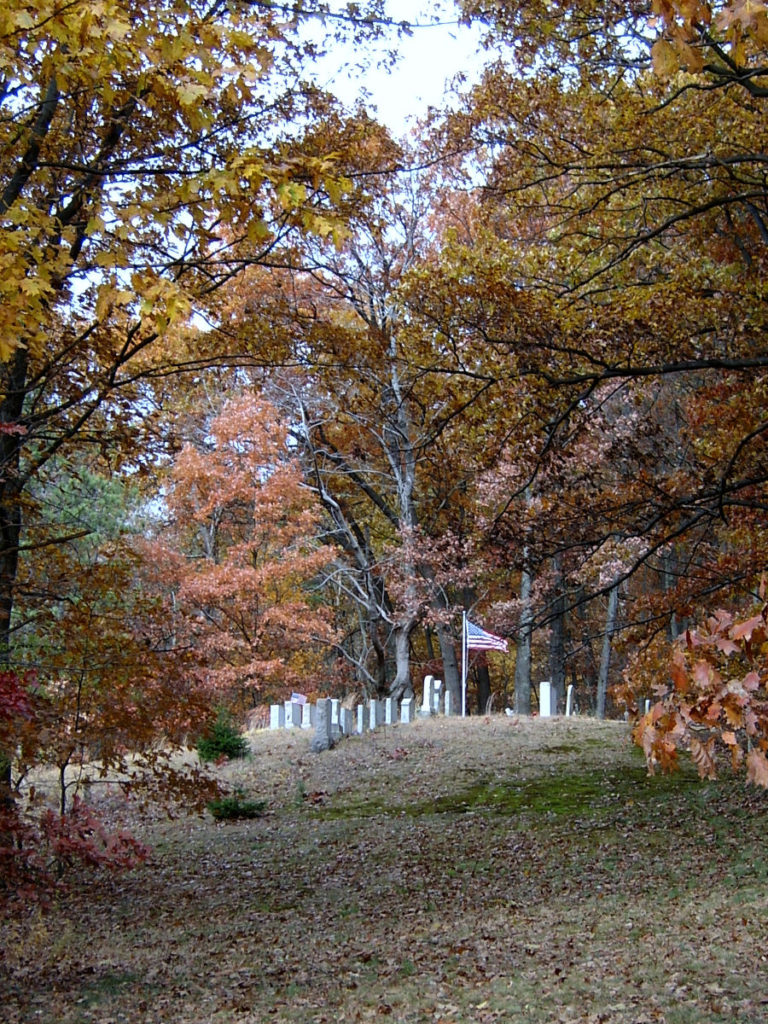
Fall colors surround a little country graveyard west of Cranberry.